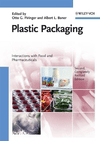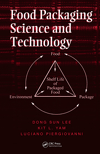Industry Q&A: Inspection and Testing
Discussing Verifying Packaging Integrity with Oliver Stauffer






Flexible Packaging recently caught up with Oliver Stauffer, vice president and COO of Packaging Technologies & Inspection (PTI), to discuss the benefits of non-destructive testing, the science and chemistry involved in packaging and why inspection/testing equipment shouldn’t be an afterthought.
Q: What’s new in the world of inspection and testing? Has PTI released any new products lately pertaining to flexible packaging?
A: The field of inspection and testing is getting far more creative. New technologies are allowing for more reliable, sensitive and practical solutions. PTI continues to develop new technologies, with several new sensory platforms to be released between now and 2018. Many improvements in the field improve current test and measurement. We often like to develop solutions that reveal what one could not see before.
Q: Other than offering peace of mind, how do you communicate the value of a good seal inspection or leak testing system?
A: Package integrity is fundamentally about assuring that the package system serves its purpose to protect the product throughout the product life cycle. In any organization’s set of principles, quality is typically one of the predominant pillars. In the space of Class III medical devices, parenteral products and infant nutrition, quality can be a matter of life or death. It exists as a pillar of every organization because everyone was at one point a patient or an infant. We have all been the beneficiary of quality packaging and the systems that assist in assuring that.
Non-destructive and quantitative testing is an absolute game-changer in improving the process, reducing waste and recouping cost. Return on investment (ROI) can often be within three to six months, but ROI is an afterthought. We take care of patients and babies. That’s what our equipment will do. That’s our job.
Q: Can you describe the key differences between non-destructive testing (NDT) systems and other types of testing technologies?
A: Put simply, non-destructive testing captures information about the tested sample with no physiochemical impact to the product. The most beneficial aspect of NDT is that products can be tested and sent to market. A tested package with a failing result is extremely valuable and can tell you far more about line quality and remedial action. Products tested that do exhibit a failure mode can be further investigated in depth with the knowledge that the sample is unadulterated.
Vacuum decay has been an effective non-destructive and sensitive offline approach for integrity testing. Non-destructive technologies like airborne ultrasound seal inspection find seal defects online. Other online technologies are available to detect product inclusions in the seal during the sealing process, such as seal bar vibrometry and ultrasonic sealing. Thermal imaging has been effectively deployed as an online process analytical tool to trend process. Each technology serves a distinct purpose to manage quality.
Q: What are some of the most common requests or comments from your customers regarding what they’d like to see in their inspection/testing equipment in the future?
A: Accurate, sensitive and reliable test systems have been the true test of performance for any inspection solution provider. Quality control solutions are no longer subjective and attribute in nature. Each result carries information that can be leveraged within the organization to improve quality performance. Data was once just retrieved for compliance, now it is being deployed for improvement. While data will continue to grow in importance, it all comes back to the reliability and accuracy of the data. If a test method is not reliable, it’s not a test method.
Q: Generally, niche equipment like testing and inspecting tools can be an afterthought. Can you explain why any decision pertaining to this type of equipment should be carefully analyzed?
A: Packaging is designed to protect the product throughout its life cycle, from production line to the end user. Inspection of packaging occurs at the final stage of manufacture, so naturally it tends to be an afterthought. The performance of your inspection solution assures that the manufacturing process will deliver quality to the end user. It is an afterthought in the packaging process, but certainly a pillar for any organization attempting to be a leader in the field.
Package testing should be incorporated early in the development process. It improves the understanding of the packaging system and assists in creating a design that can be more quality capable. Many package formats complete the package design process only to discover there is little opportunity to assure quality for a high-risk application.
Q: Is there anything else you’d like to share about inspection/testing?
A: The field of package testing and inspection is as much about science as it is engineering. Understanding the chemistry and physics of a package application is extremely important to evaluate the options and risks at hand. Once an in-depth understanding of the package and product characteristics is developed, an appropriate inspection solution can be evaluated to mitigate risk. Effective package integrity testing is a comprehensive and interdisciplinary endeavor.
Looking for a reprint of this article?
From high-res PDFs to custom plaques, order your copy today!











